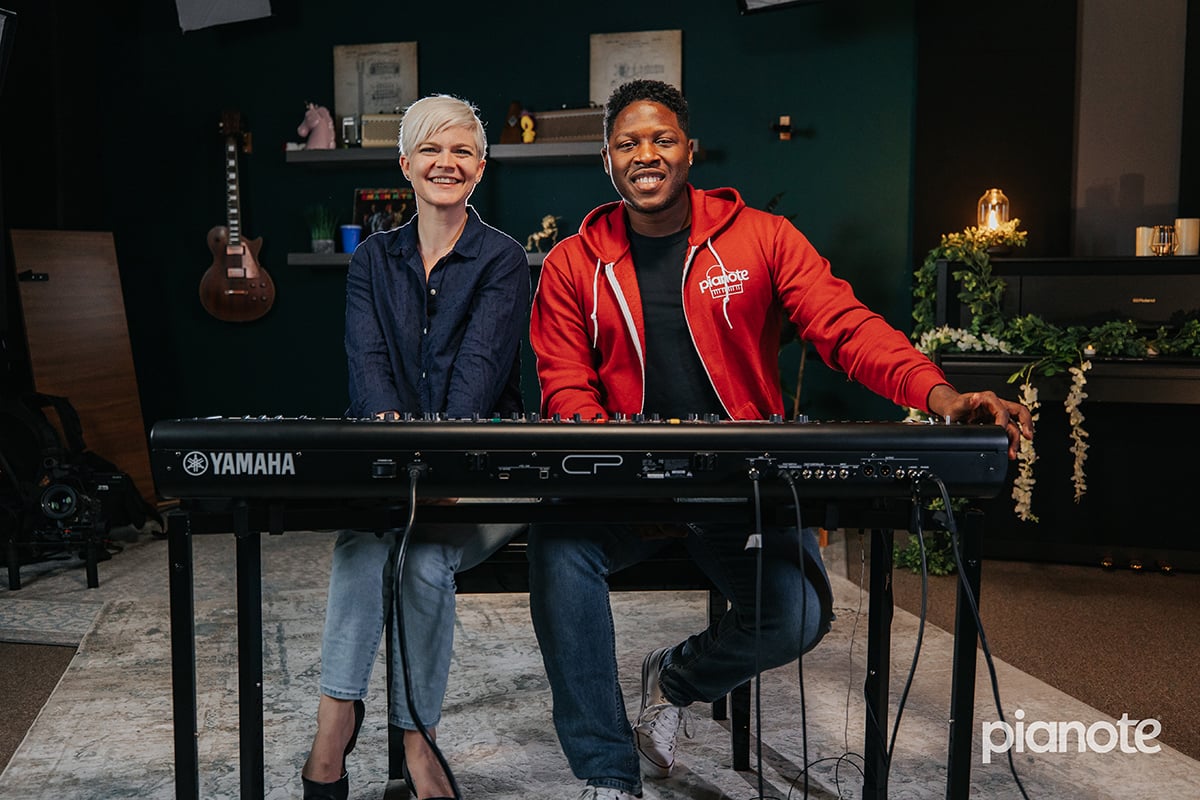If you’ve spent any time on Pianote, you’ll know that we love chords. Chords are the foundation to music, and knowing chords will unlock hundreds of songs.
So, it only makes sense to practice chords a lot!
But playing chords over and over again, solid and broken, can be boring. Luckily, Erskine Hawkins is here to show you a fun and musical way to practice your chords.
Before we start, make sure you download the sheet music for this lesson and if you don’t already, get to know your diatonic chords!

In our first exercise, Erskine alters the iii, IV, and viio chords and turn them into the first inversion chords of I, IV, and V, respectively. This alters the sound of the progression but keeps everything built on the same degree of the scale.
Now let’s make our chords more musical! With your right hand, play a 5-1 pattern (G and C) and with your left hand, play the altered chords.

By the way, the Roman numerals under the chords are the chord’s diatonic names. The number indicates what degree of the scale a chord is built on. Lowercase numbers are minor chords. So, because D-F-A is built on the second note of the C Major scale and a minor chord, it is our ii (“two chord”).
The Arabic numbers after the slash in chords C/E, F/A, and G/B just indicate what degree of the scale the lowest note of that chord is. These chords are still the I (one chord), IV (four chord), and V (five chord), respectively because their root notes are C (I), F (IV), and G (V) — they’ve just been inverted.
Need more explanation? Check out our lesson on the number system.

Now let’s take things up a notch. Try playing the same chords but flip the middle note up an octave. You’ll be playing tenths! This may be difficult for players with small hands, so if you can’t reach a tenth, separate the bottom note and the top two notes (more on this in exercise #5).

Erskine Hawkins has played with names like Eminem, Zendaya, and Rihanna and he teaches a gospel piano course right here on Pianote! Erskine’s course includes exercises, eleven video lessons, and real song examples. For a sneak peek, check out Gospel 101. For the full package, become a Pianote Member.
Now let’s combine these tenth chords with the right hand melody from before:

And here’s a version of the exercise for smaller hands: separate the tenth chords by playing the bass note first and the top two notes after.

Remember: practice doesn’t have to be boring! For more fun practice tips, check out these lessons:
Get free lessons, tips, and piano news delivered to your inbox every week. Subscribe to The Note!
Charmaine Li is a Vancouver writer who has played piano for over 20 years. She holds an Associate diploma (ARCT) from the Royal Conservatory of Music and loves writing about the ways in which music—and music learning—affects the human experience. Charmaine manages The Note. Learn more about Charmaine here.
/marketing/pianote/promos/april/banner-bg-m.webp)
We use cookies for traffic data and advertising. Cookie Policy »
/marketing/pianote/promos/april/banner-title.webp)